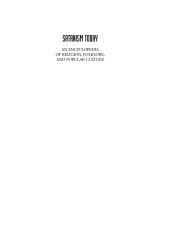I. VAMA MARGA Foundations Of The Left-Hand Path - staticfly.net
I. VAMA MARGA Foundations Of The Left-Hand Path - staticfly.net
I. VAMA MARGA Foundations Of The Left-Hand Path - staticfly.net
You also want an ePaper? Increase the reach of your titles
YUMPU automatically turns print PDFs into web optimized ePapers that Google loves.
symbolism is sufficient to satisfy your aesthetic needs as a magician, we can<br />
hardly argue with matters of personal taste; by all means, describe yourself in<br />
whatever terms you like – only do so consciously. However, for the more<br />
complicated pursuit of magic encouraged here, the differentiations of black<br />
and white magic will he refrained from, to avoid unnecessary entanglement<br />
152<br />
in needless symbolic confusion.<br />
To illustrate the capricious and restricted nature of this black/white<br />
business, a few examples will suffice. Although black is certainly the color<br />
associated with evil in the post-Christian European world., its transglobal<br />
symbolism is far more ambiguous. In ancient Egypt, for instance, black was a<br />
symbol associated entirely with the cultural good, since it represented the<br />
fertile black earth of the Nile. Egypt's ancient name, Kmt, means "the black<br />
land", a designation which was translated into Arabic as al khem, and may<br />
have given birth to the English words alchemy and chemistry, sciences long<br />
connected to Egypt. <strong>The</strong> daemonic and culturally "evil" beings in Egyptian<br />
religion, the foremost of these being the god Set, were colored red, the<br />
recognized hue of cosmic malevolence. <strong>The</strong>refore, in ancient Egypt, a<br />
magician who practices what the modern Western world designates as "black<br />
magic" would have chosen the color red as a symbolic subversion, Red magic<br />
– appropriate though the phrase may be for an Egyptophile magician – might<br />
summon up the odd image of a Marxist sorcerer in contemporary parlance.<br />
Similarly, although the color white is accepted by Christianized<br />
culture as the epitome of cosmic benevolence and holiness, white is quite<br />
commonly regarded as a demonic and malefic color in many African and<br />
Asian cultures. <strong>The</strong> poet Martin Fierro once wrote that "<strong>The</strong> White paints the<br />
devil black/the Black paints him white." This only demonstrates the extreme<br />
relativity of color symbolism to magical practice. Our recommendation to the<br />
magician is to avoid adopting symbolism related to any one particular time<br />
period or culture as much as possible, unless that symbolism is specifically<br />
chosen for a particular magical operation. This opens up – rather than<br />
restricts – the magician's ability to communicate his or her will to the many<br />
levels of reality. We have personally found that the value of separating<br />
magical activity into black and white branches is unserviceable to the<br />
pragmatic magician's needs.<br />
On the other hand, we have found the phrase "the Black Arts" to be<br />
a useful short-hand term to serve as an umbrella for the panoply of magical<br />
techniques available to the magician, especially since it emphasizes the<br />
important artistic nature of magike tekhne. Since this phrase stands on its<br />
own without an inbuilt comparison to an opposing "White Arts" it seems to<br />
us to be a more potent description of the subject, free of any superfluous<br />
moral implication. <strong>The</strong> Black Arts is also a purer term than black magic,<br />
since its use predates the Christian branding of all magic as evil. For<br />
instance, Ovid (43 B.0 – A.D. 18) already refers to the sorcery of the<br />
legendary enchantresses Medea and Circe as "their black art" in his famous<br />
Ars Amatoria (<strong>The</strong> Art of Love).<br />
However, this is not to deny the necessity of observing and<br />
classifying some of the very real differences that do exist between various<br />
153<br />
magical approaches. <strong>The</strong> ability of language to separate discrete opposites is<br />
of great use to the magician in creating a more workable magical blueprint.<br />
<strong>Of</strong> more precise benefit to our own objectives, and therefore utilized in this<br />
study as key descriptive devices, are the Tantric terms left-hand path and<br />
right-hand path. As opposed to black and white magic, left-hand path and<br />
right-hand path, if properly understood, do not infer subjective moral<br />
qualities of good and evil. <strong>The</strong>y focus instead on more pragmatic aspects of<br />
actual method and objective. To say that one is a black magician or a white<br />
magician does not tell us anything about what the magician actually does, it
















